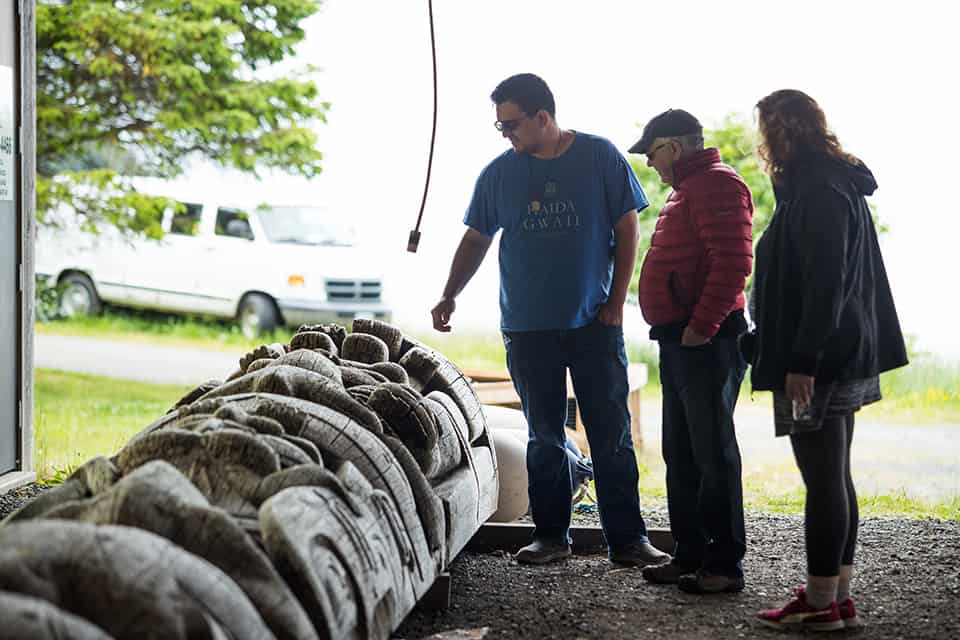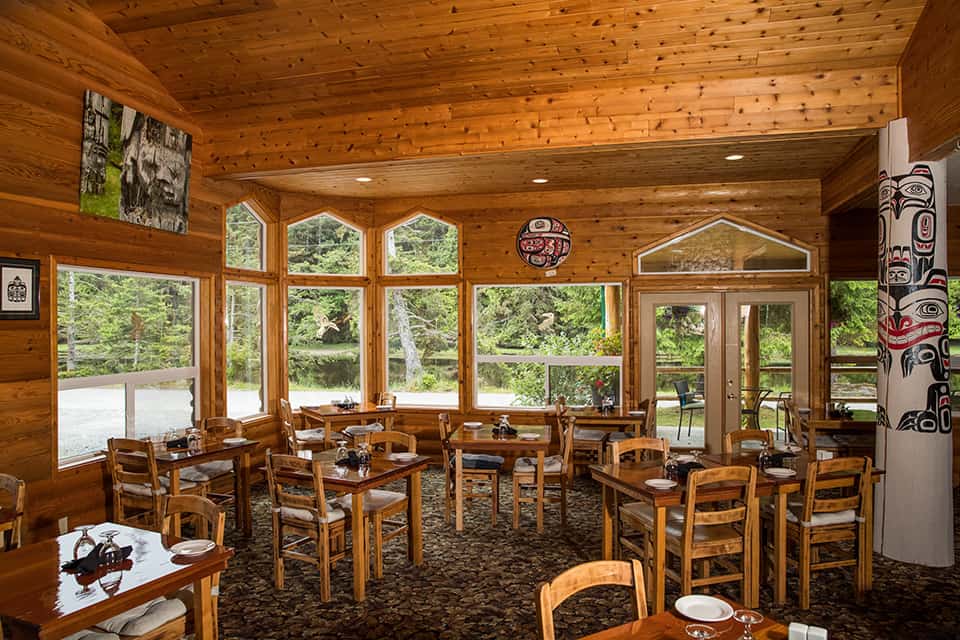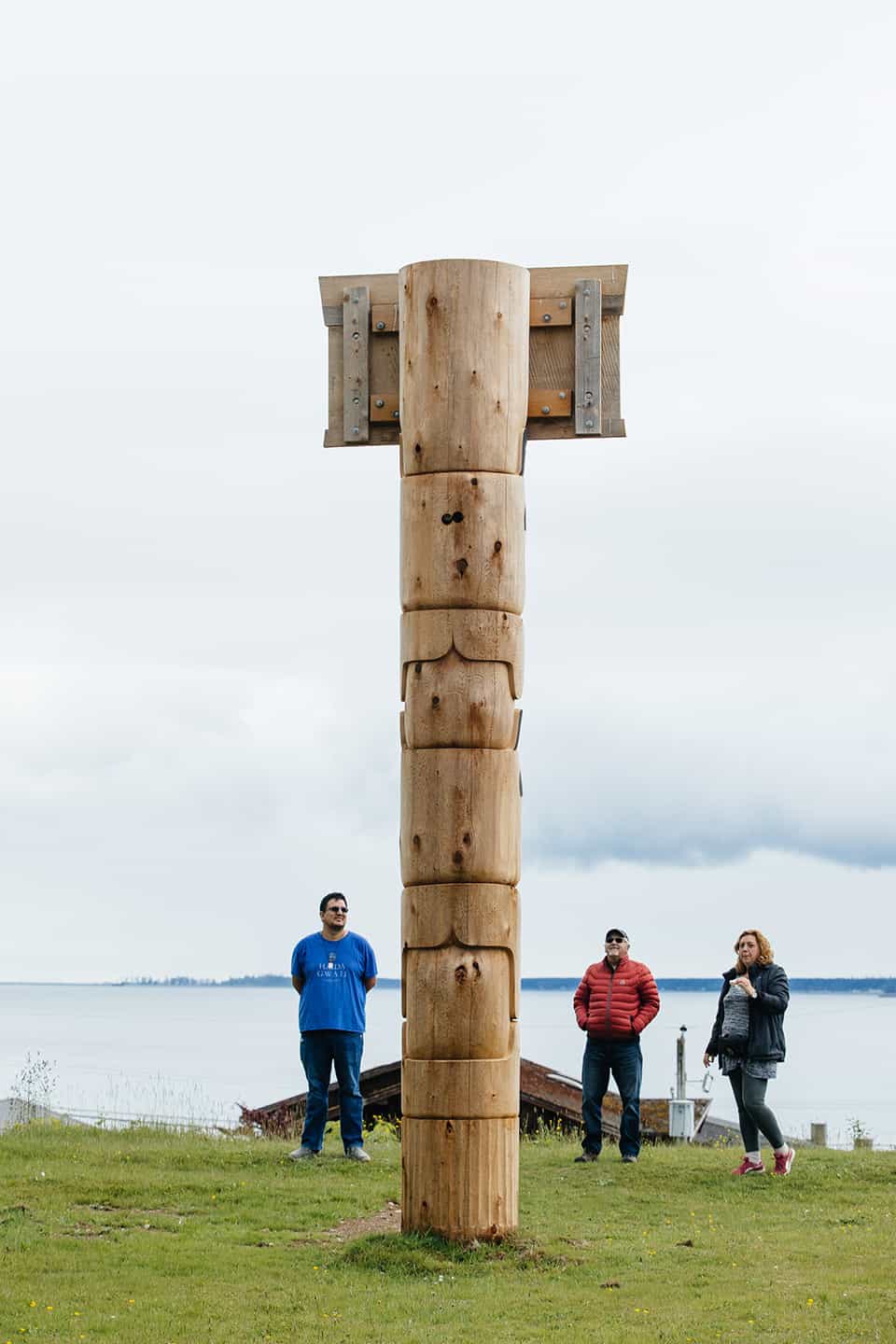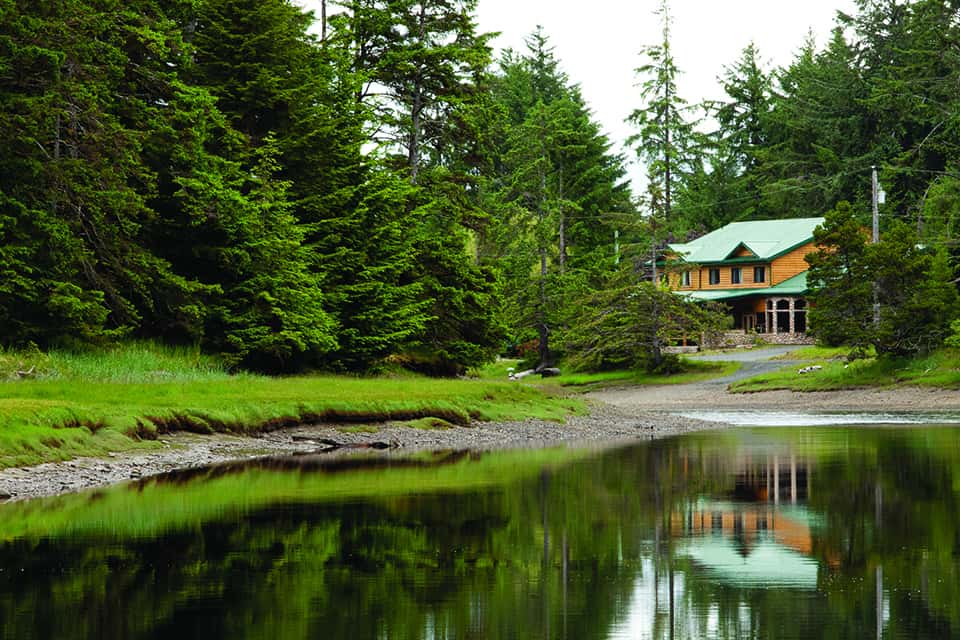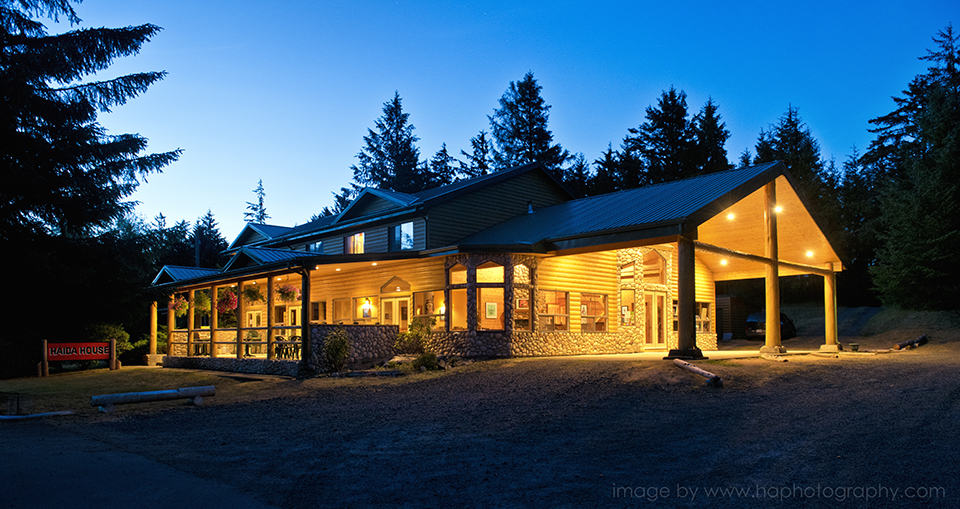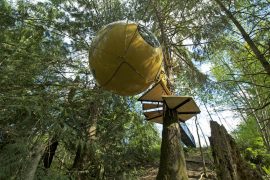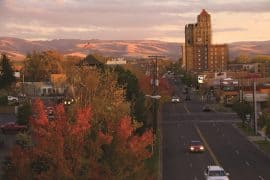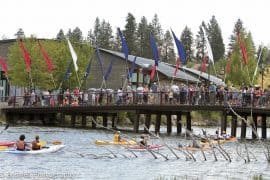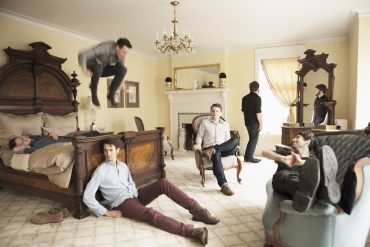Exploring Haida Gwaii, the “Canadian Galápagos”
written by Michelle Hopkins
We were walking along a clamshell-lined trail on the ancient Haida village of K’uuna Llnagaay (Skedans)—the third largest in an archipelago of 150 islands known as Haida Gwaii, off British Columbia’s west coast. The shells, we were soon told, are there to ensure we don’t trespass onto the sacred burial grounds of ancestors. There seemed to be a reverent hush as we moved along the path, wondering what secrets these mossy burial grounds might reveal.
This was the first of three historical villages we discovered during our Haida Style Expeditions trip. Earlier, we had loaded into a Hurricane zodiac and off we plummeted into the morning sunshine while our guide James Cowpar prepared us for what was to come. We watched as silky black Stellar sea lion heads bobbed up and down on the water, while some of the massive ones (as heavy as 2,200 pounds) barked their discontent as we moved in for a closer look.
In the 1880s, Skedans consisted of twenty-seven homes, each with a totem pole carved with family stories of the homeowner’s clan (either Eagle or Raven). Today, they are mossy reminders of the 500 people who once inhabited this village. James also pointed out many cedar mortuary totems, where a cavity was carved out of the top to hold the burial box containing the remains of a high-ranking band member.
Next it was off to Tanu (T’aannuu), the resting place of internationally acclaimed Haida carver Bill Reid. In 1998, his ashes were scattered and interred in his maternal grandmother’s village.
Waiting for us on the shore was Walter, a member of the Haida Watchmen, volunteers who oversee the seven village sites in the area. He explained to us how villages in Haida Gwaii were abandoned in the 1890s after a smallpox epidemic eviscerated the Haida population from up to 30,000 people to fewer than 500 survivors.
This spiritual village, filled with ancient mythical stories, can quite literally make outsiders feel as if they’re in another world.
Our last stop was to Windy Bay on Lyell Island, the site of the Legacy Pole, which in August 2013 became the first totem pole erected in the area since the nineteenth century.
Queen Charlotte City
Earlier that week we had arrived via a twenty-minute ferry ride from Sandspit to Queen Charlotte City for our five-night stay at the Skyfall Cottage. It was ideally situated for us to explore the Haida Heritage Centre and the Gwaii Haanas National Park Reserve. On the deck each night, we raised our glasses to the expansive views of the spectacular islands dotting Bearskin Bay.
The following morning, we headed to Port Clemens. An inland seaport, it was the home of the Golden Spruce, as well as the white raven—an albino raven that lived here for a few years before it met its unfortunate end, not long after the Golden Spruce was cut into history.
We piled into the truck of our kayaking guide, Alan Lore, owner of Budgies Backpackers and Sight Seers.
Before we reached our kayaking destination, he stopped at the entrance of the Golden Spruce trail, where the 165-foot tree once stood. Made famous in author John Vaillant’s award-winning book, The Golden Spruce, the 300-year-old Sitka spruce grew in this coastal rainforest until the winter of 1997, when timber scout Grant Hadwin took a misguided stand against logging in the old-growth forest by felling the tree.
Standing across a creek bed, we stood in awe of the remnants of the tree’s decaying crown. To this day, this tree is revered by the Haida First Nation. Known as K’iid K’iyaas, or “ancient tree,” it is deeply imbedded in their culture and mythology.
Meanwhile, Port Clements was perfect for ocean exploration. We kayaked along several inlets, hoping to catch sight of the Haida black bear, which can grow to more than 600 pounds, or the marbled murrelet, a rare seabird.
Then it was off to the Haida House.
Haida House
Facing the Tlall River, where it meets the sandy beaches of the Hecate Strait, Haida House was our home for two nights.
The property was bought by HaiCo, the economic development arm of the Council of Haida Nation (CHN) in 2011 to end the trophy bear hunt on Haida Gwaii.
After settling into our modest but comfortable room in the rustic lodge, we headed downstairs to have dinner with cultural interpreter Aay Aay Hans, a master weaver and Haida language advocate. This “gentle giant” is part of a team trying to preserve the Haida language. He explained there are fewer than twenty people around the world who can still speak the language of the Haida people. For Hans, the destruction of their language is profoundly tied to a loss of identity.
Hiking paradise
Old growth forests that have survived for thousands of years can be found everywhere. We hiked several during our eight-day journey—many with trees towering above us, complete with strands of lichen hanging from their branches, and thick layers of spongy moss in various shades of green carpeting our treks.
As our trip came to a close, we once again marveled at Haida Gwaii’s historically significant art and culture. Dubbed by some as the Canadian Galápagos for its endemic wildlife, this eco-paradise of stunning landscapes, ancient villages, totem poles, crystal clear waters, and diverse wildlife, captivated us.




